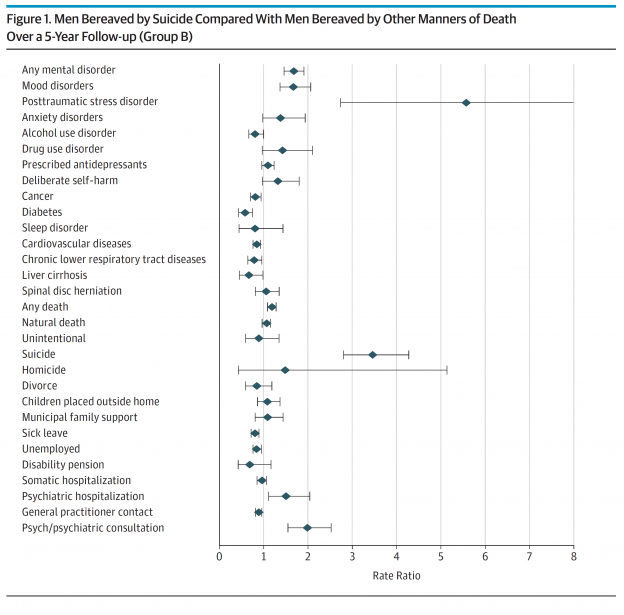In a recently conducted study at the Capital Region Psychiatry, Trine Madsen and colleagues from DRISP examined the effectiveness of the ‘Systematic Safer Discharge Procedure,’ known as the SAFE intervention. The aim was to evaluate whether an intervention to reduce risks of suicidal behavior after discharge from psychiatric hospitalization was effective. Previous Danish research findings have shown high suicide rates in the immediate period after being discharge from psychiatric hospitalization. During the first week after discharge, the suicide rate was more than 200-fold higher than the rate of the general population. International studies have shown that brief interventions offered immediately after discharge can be effective in preventing suicide, and this approach was provided in the SAFE intervention.
The study covered 15,208 discharges of individuals aged 18 and older over a 2-year period from 2018 to 2020. At the Mental Health Center Copenhagen, three systematic procedures were implemented to support individuals being discharged: 1) face-to-face meetings between patients and outpatient staff before discharge, 2) face-to-face meetings between patients and the same outpatient staff during the first week after being discharge, and 3) involvement of relatives.
The results did not show any significant difference in suicidal behavior between patients discharged from the Mental Health Center Copenhagen, i.e. the site of the SAFE intervention, and patients discharged from four other psychiatric centers in the Capital Region, which served as comparison groups. During the first six months after discharge, a total of 570 suicide attempts and 25 suicides were recorded. The suicide attempt rate in the first 6 months after discharge was 11,652 per 100,000 person-years at the SAFE intervention site, compared to 10,530 at the other psychiatric centers. In other words, no significant difference in suicidal behavior (OR=1.1; 95% CI: 0.9-1.4) or death by suicide (OR=1.3; 95% CI: 0.6-2.8) was observed after six months of follow-up.
An important caveat about the study was that F-ACT teams were simultaneously established at several of the centers serving as comparison groups. F-ACT teams visited patients within 2 days after discharge. Thus, a similar preventive effort was ongoing at the other centers, which may have contaminated the effect of the SAFE intervention. Although the SAFE intervention did not demonstrate an effect, the high rates of suicidal behavior in the first six months after discharge in both the intervention and comparison groups suggest that preventive efforts should include support for longer time than just the first week after discharge. The study emphasizes the importance of understanding and addressing the needs of individuals after being discharged from psychiatric care.
The study was supported by The Trygfoundation, and the SAFE intervention was funded by the Danish Health Authority.
You can find the study here.
DRISP: Trine Madsen, Eybjørg A Heygum Egilsdóttir, Annette Erlangsen, Merete Nordentoft




